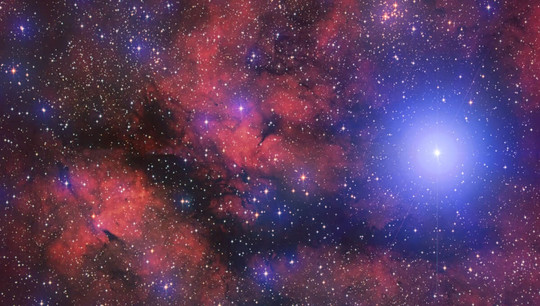Ural Federal University’s Kourovka Astronomical Observatory Spearheads Scientific Tourism
The Kourovka Astronomical Observatory of the UrFU is developing scientific tourism. In April, they will launch the Astrophysical Show program. Guests will learn about spectral studies, how to determine the chemical composition of stars and nebulae without touching them and see the spectra of various gases and substances using a small spectrograph.
“The Kourovka Astronomical Observatory is located in an unfavorable area, with limited scientific research possibilities due to its proximity to large cities and poor astroclimate. However, with the existing equipment, we continue to solve scientific problems that do not require ideal astroclimatic conditions, such as studying relatively bright variable stars and exoplanet systems. We decided to transform the observatory’s work and develop other activities. These activities include scientific tourism”, says Vadim Krushinsky, Acting Director of the Kourovka Astronomical Observatory at UrFU.
The 450 mm telescope AZT-3 has been restored and adapted for visual observations, in addition to the astrophysical show. Visitors will soon be able to take photos of space objects using their SLR cameras. UrFU students are also developing a compact telescope for taking pictures of the Moon and stars on smartphones. The observatory specialists plan to create a museum and experimental cluster dedicated to the future of civilization.
“We aim to bring together fundamental science, modern technology, and art. The complex should not be a museum of past achievements but a futuristic laboratory where we can explore ways to sustainably develop civilization. Visitors will be able to compare two possible directions of development: space expansion and evolution within the Earth. Both futures require the development of new technologies, which often overlap. Preserving the ecological balance and developing new sources of energy, food, and water are crucial for the future of civilization on Earth. When it comes to space expansion, these same issues must be addressed, but on a smaller scale within a space colony”, explains Vadim Krushinsky.
Visitors can participate in scientific research at the telescope pavilions and laboratory building. They will learn about the history of the Universe, studies of the Sun, space, exoplanets, and astrochemistry. Additionally, guests can observe equipment for studying global climate change at the Sverdlovsk region carbon test site, which is also located on the Kourovka Astronomical Observatory’s territory.
The observatory offers daytime and evening excursions. Daytime excursions consist of two parts: a lecture on astronomical topics and familiarization with the equipment on which scientists work. If the sky is clear, from April to October, visitors can observe the Sun on a large solar telescope, and from November to March – on a mobile telescope. Over 7,000 people visited the observatory last year.
“The evening tour consists of two parts. First, a walk around the observatory and an introduction to the star telescopes. Modern telescopes equipped with digital cameras do not allow observation with the naked eye. We have restored a star telescope AZT-3 and adapted it for visual observations. With the help of volunteers, we show the Moon, planets, stars, planetary nebulae, globular star clusters, and neighboring galaxies. After a brief indoor break, the second part of the tour commences in a warm room. Here, we take a walk through the starry sky, introducing guests to the main constellations and interesting objects visible in our Ural sky. We observe the most fascinating objects through telescopes installed on our observation deck”, explains Vadim Krushinsky.

